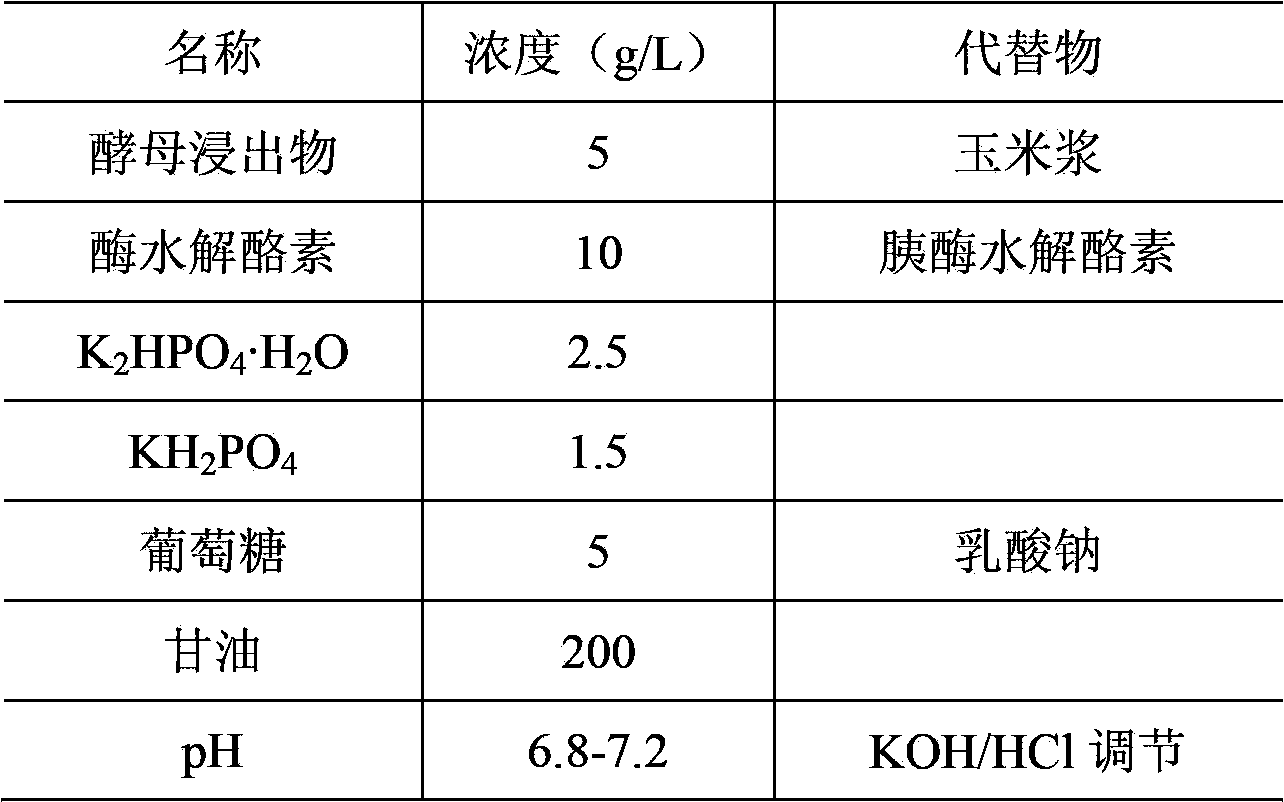Method for increasing content of propionic acid in batch fermentation acid-producing liquid
A fermentation supernatant, propionic acid technology, applied in the direction of microorganism-based methods, fermentation, biochemical equipment and methods, etc., can solve the problems of insufficient content, difficulty in meeting the needs of efficient biological phosphorus and nitrogen removal, and achieve propionic acid The effect of high content
- Summary
- Abstract
- Description
- Claims
- Application Information
AI Technical Summary
Problems solved by technology
Method used
Image
Examples
Embodiment 1
[0031] Such as figure 1 Shown:
[0032] (1) Mixture of pre-fermented sludge and kitchen waste (first-stage fermentation);
[0033] Take the crushed and sieved kitchen waste (removing chopsticks, broken bones, plastics, paper pieces, debris, etc.) 10-mesh sieve to obtain concentrated kitchen waste with a C / N of 16-20; add tap water to make the water content 80%; the main components of kitchen waste are rice, supplemented by meat and oil, rice, meat and oil The optimal dry weight ratio is 7:2:1.) 0.41L, mixed with 0.46L concentrated excess sludge (TSS 20g / L, VSS 14g / L, moisture content 98%, pH=6.84) (sludge and The dry weight ratio of kitchen waste is 0.18:1), add 1.63L tap water, and inject it into a 3L anaerobic fermentation tank (TCOD is 25g COD / L);
[0034] Fermentation at room temperature (25°C) for 2.5 days with a stirring speed of 120rpm and using Ca(OH) 2 The pH was controlled to be 8.5; the fermentation mixture was taken out and centrifuged at 3000 rpm for 5 min to ...
Embodiment 2
[0041] (1) Mixture of pre-fermented sludge and kitchen waste (first-stage fermentation);
[0042]Take 0.37L of crushed and screened kitchen waste (removing chopsticks, broken bones, plastic, paper pieces, debris, etc.), and 0.7L of concentrated residual sludge (TSS 20g / L, VSS 14g / L, moisture content 98%, pH=6.84) mixed (dry weight ratio of sludge to kitchen waste is 0.3:1), add 1.43L tap water, inject into 3L anaerobic fermentation tank (TCOD is 25g COD / L);
[0043] Fermentation at room temperature (25°C) for 2.5 days with a stirring speed of 250rpm and using Ca(OH) 2 The pH was controlled to be 8; the fermentation mixture was taken out and centrifuged at 3000 rpm for 5 min to obtain 2 L of centrifuged supernatant.
[0044] (2) Activate and enrich Propionibacterium;
[0045] Propionibacterium (SICC1.256) was activated from the slant and then enriched and stored in 10% glycerol tube storage medium (see Table 1 for the medium formula), and the storage environment was -80°C; be...
Embodiment 3
[0050] (1) Mixture of pre-fermented sludge and kitchen waste (first-stage fermentation);
[0051] Take 0.45L of crushed and screened kitchen waste (removing chopsticks, broken bones, plastic, paper pieces, debris, etc.), and 0.22L of concentrated residual sludge (TSS 20g / L, VSS 14g / L, moisture content 98%, pH=6.84) mixed (dry weight ratio of sludge to kitchen waste is 0.08:1), add 1.83L tap water, inject into 3L anaerobic fermentation tank (TCOD is 25g COD / L);
[0052] Fermentation at room temperature (25°C) for 2.5 days with a stirring speed of 60rpm and using Ca(OH) 2 The pH was controlled to be 8; the fermentation mixture was taken out and centrifuged at 3000 rpm for 5 min to obtain 2 L of centrifuged supernatant.
[0053] (2) Activate and enrich Propionibacterium;
[0054] Propionibacterium (SICC1.256) was activated from the slant and then enriched and stored in a 15% glycerol tube storage medium (see Table 1 for the medium formula), and the storage environment was -80°C...
PUM
| Property | Measurement | Unit |
|---|---|---|
| concentration | aaaaa | aaaaa |
Abstract
Description
Claims
Application Information
 Login to View More
Login to View More - R&D
- Intellectual Property
- Life Sciences
- Materials
- Tech Scout
- Unparalleled Data Quality
- Higher Quality Content
- 60% Fewer Hallucinations
Browse by: Latest US Patents, China's latest patents, Technical Efficacy Thesaurus, Application Domain, Technology Topic, Popular Technical Reports.
© 2025 PatSnap. All rights reserved.Legal|Privacy policy|Modern Slavery Act Transparency Statement|Sitemap|About US| Contact US: help@patsnap.com



